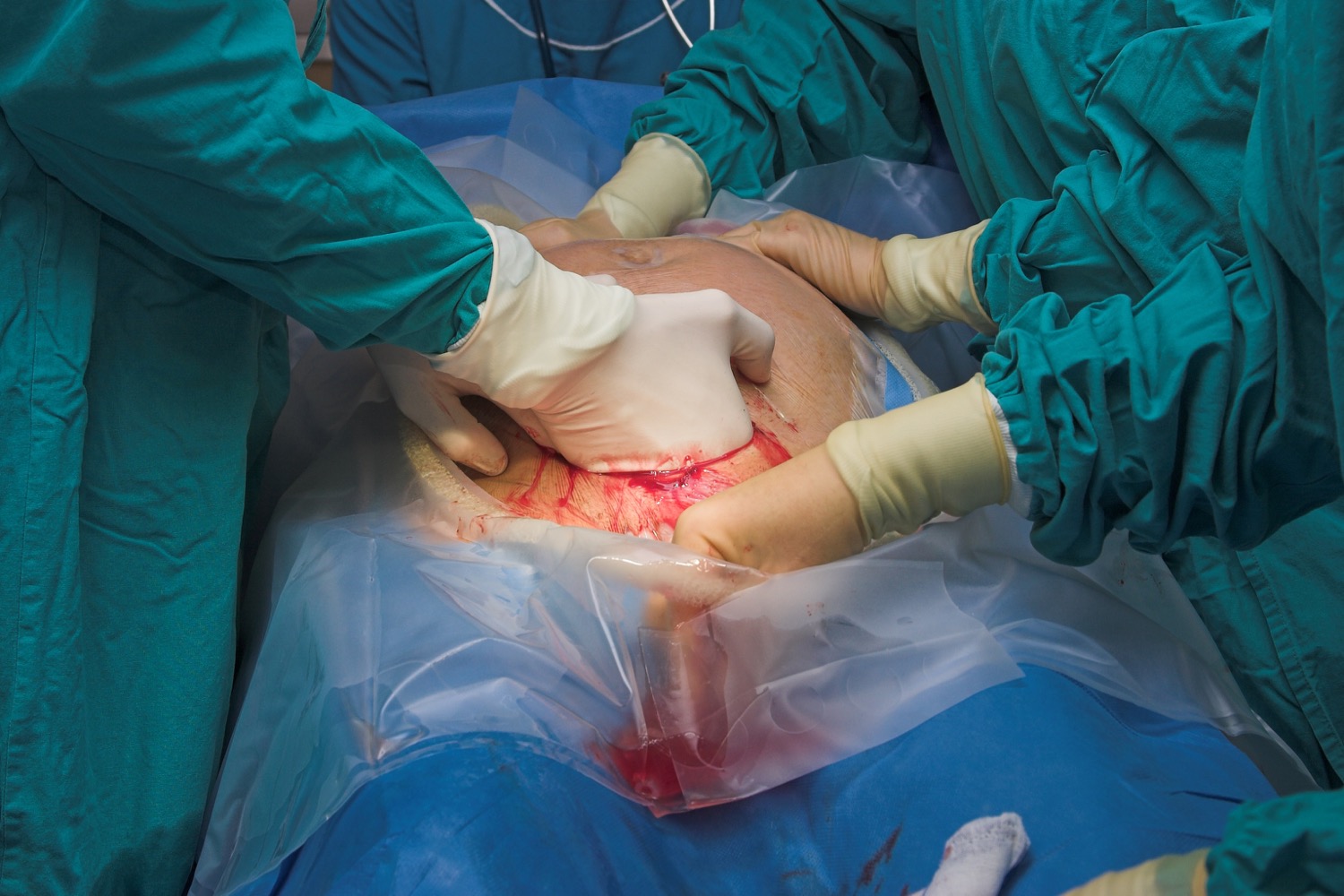Repeat Cesarean Sections and VBAC
A Cesarean Section delivery requires an opening in the lower uterine segment large enough to accommodate the largest part of the baby, usually the head. After these large incisions are repaired, they almost always heal well, but the tissue is not the same. In a later pregnancy, that old incision area is vulnerable to rupture during labor. If a uterus has undergone second or subsequent incisions for another pregnancy or other reasons, like removal of a fibroid, then it is at even more risk of rupture.
Rupture of the uterus doing labor can be a slow gradual opening of the incision with subtle signs, but more often it is a cataclysmic event, with rapid deterioration of both mother and baby requiring immediately surgery. Recall that the uterus has grown to accommodate the baby, the placenta and all the fluid. That's not all which has grown. The large arteries that feed that uterus have grown as well. By the third trimester, they are huge and their branches have proliferated tremendously. The uterine arteries and their branches lie lateral to each side of the uterine incision we make for delivery of the baby. If that old incision blows open forcefully during labor, it can tear open these arteries and blood loss can be very rapid. That is why we stipulate that those undergoing a trial of labor after C section (TOLAC) do so in a facility with a C section team on immediate standby. It is also why we require 2 IVs, and permission to administer blood signed well in advance.
In the last 50 years, the pendulum of professional opinion has swung back and forth on the advisability of trial of labor after C section. Our recommendations today are based on our best evidence. We take this evidence into consideration, and then, most importantly, individualize the plan according to the risk factors and wishes of the patient.
Candidates for TOLAC ( trial of labor after C section)
patients with one prior C section
patients with two prior C sections especially when there is also a prior vaginal delivery ( though data are limited to support this )
Patients with twins (with first twin vertex, i.e .head down) and one prior C section
Patients who are overdue
TOLAC, among those who desire and are chosen for TOLAC, is successful about 70% of the time.
Factors against successful TOLAC
Evidence based factors:
Prior C section for arrest of labor
Increased maternal age
Non-white ethnicity
Gestational age greater than 40 weeks
Maternal obesity
Short inter conceptual interval
Increased neonatal with weight
I would also add the following based on experience:
Unengaged vertex at term ( baby's head isn't down in the pelvis at term)
If a patient choses repeat C section, what does she need to know ?
Risks of Repeat C section
Increased post op discomfort and recovery time compared to successful VBAC (vaginal birth after cesarean section)
Longer length of case due to possible need to go through scar tissue from the first C section
Increased risk of bladder injury in surgery due to scar tissue between bladder and lower uterine segment
Increased general surgical risks such as infection and blood loss
Risks to future pregnancies since higher number of C sections increase surgical risks, including risk of abnormal growth of the placenta in the wall of the uterus , cervical area or bladder, requiring major surgery or Cesarean hysterectomy.
How does labor differ in TOLAC ?
Labor itself is not different. Monitoring of labor in TOLAC is more intensive. We monitor baby continuously, and we are more precise about how we monitor contractions. Evidence supports the use of pitocin for induction or augmentation in TOLAC, but it is used more precisely. We do not use cytotec or cervidil cervical ripening in TOLAC since it is associated with increased risk of uterine rupture in those with prior C section. When you undergo a TOLAC, our threshold for intervention is lower. If you have a protracted labor or questionable fetal heart tones, we tend to be conservative and conclude the trial of labor, and go to repeat C section.
Making the decision of TOLAC versus Repeat C section
You and your Obstetrician should have a series of conversations during the pregnancy about this question. It is possible that neither you nor she may know what is best in the early phases of the pregnancy. You may have to see how the features of the pregnancy manifest themselves as you get close to term. Then you both can make a rational choice based on the realities at hand.


